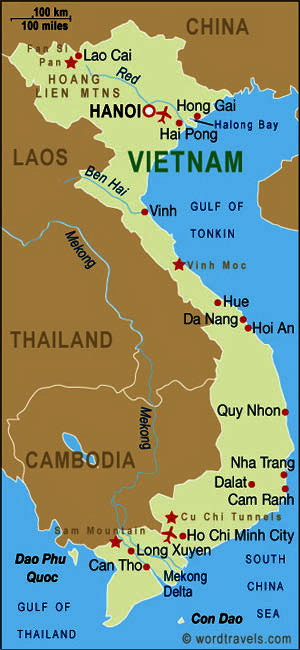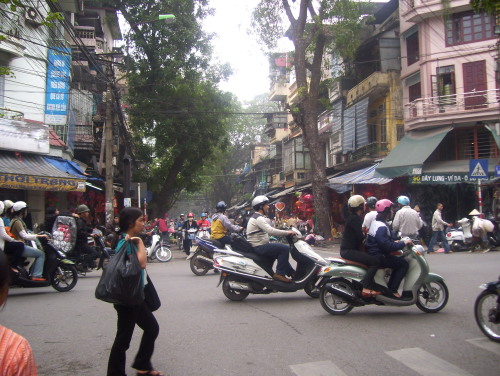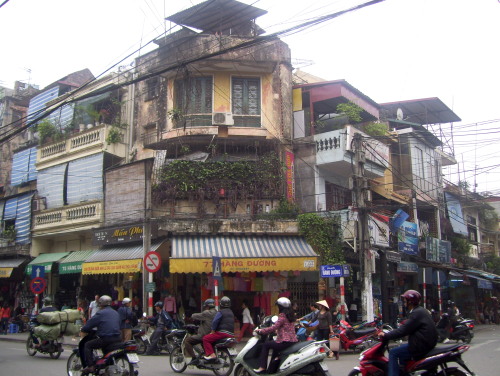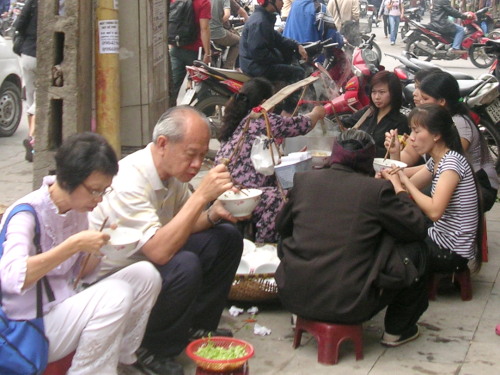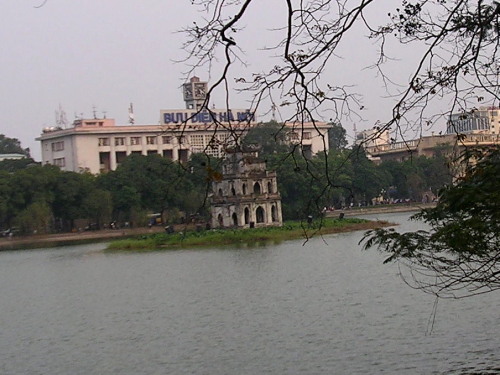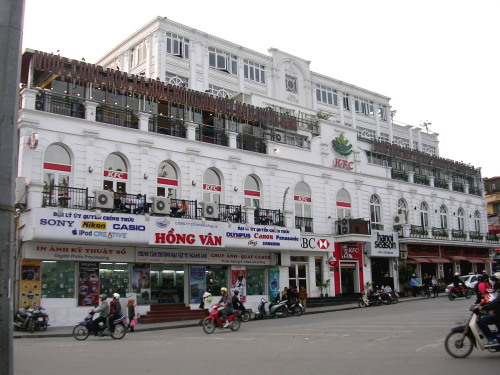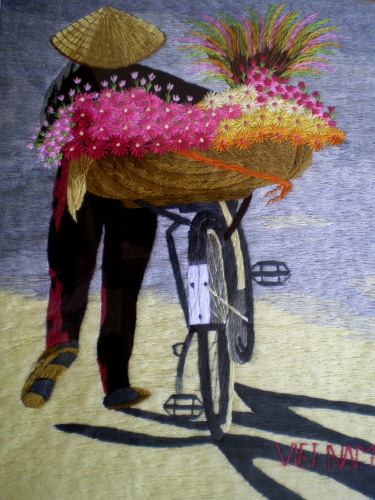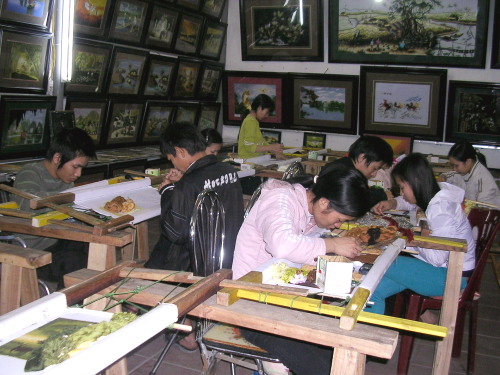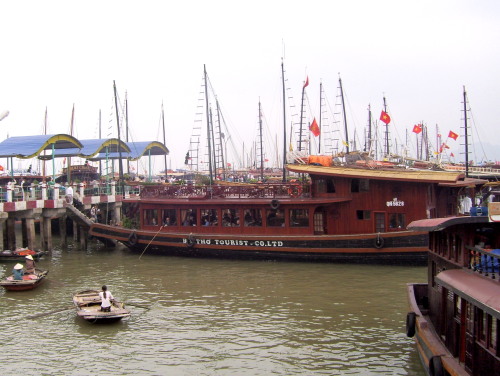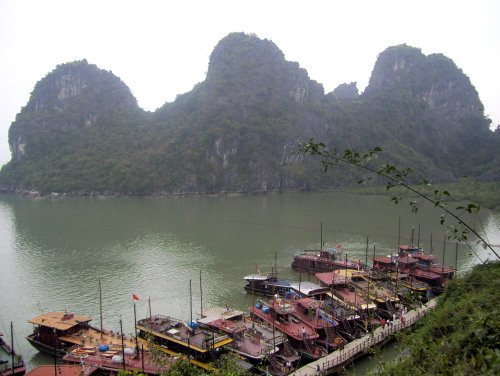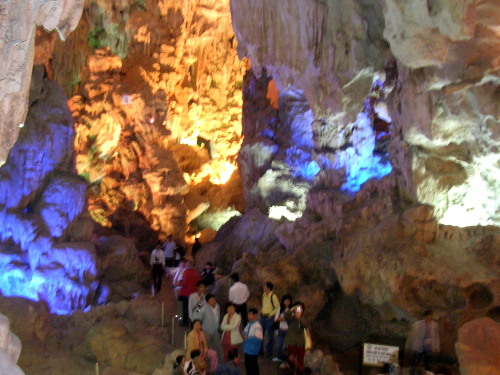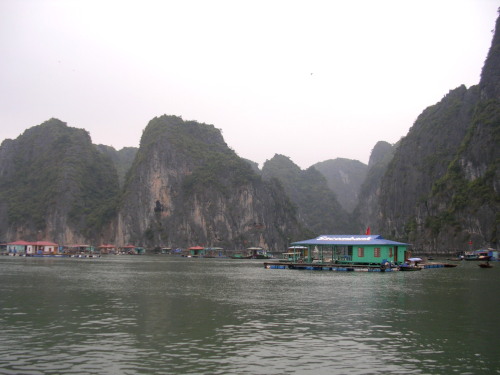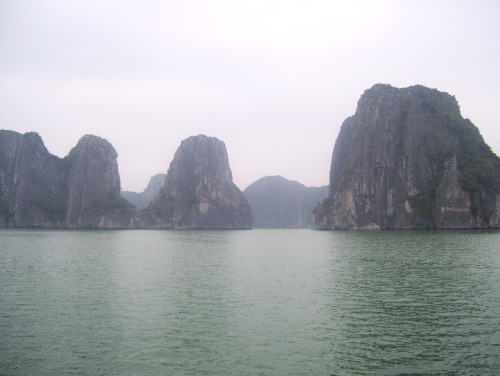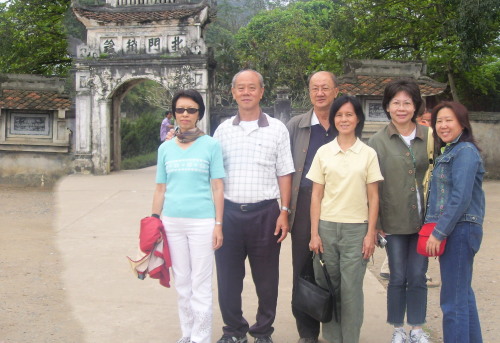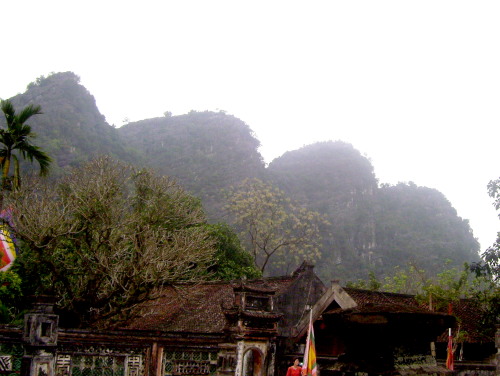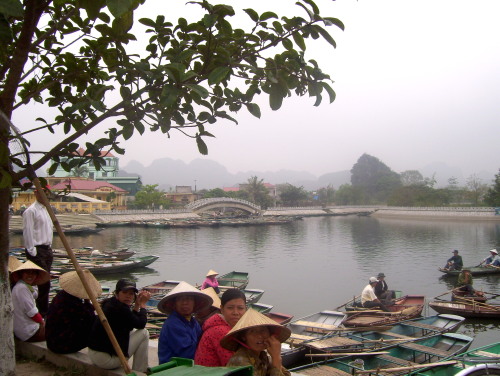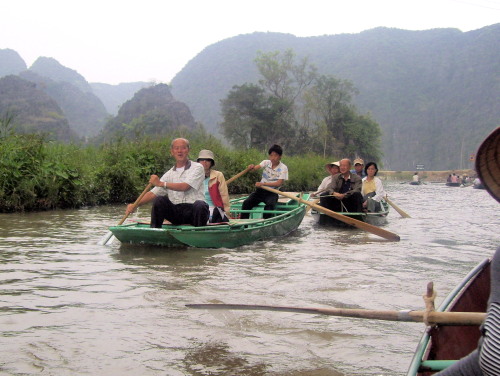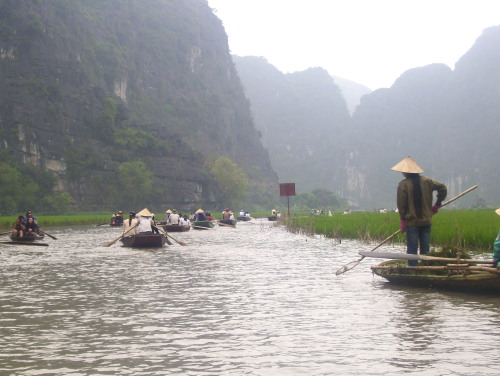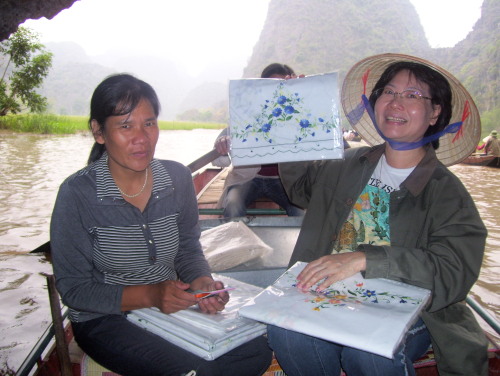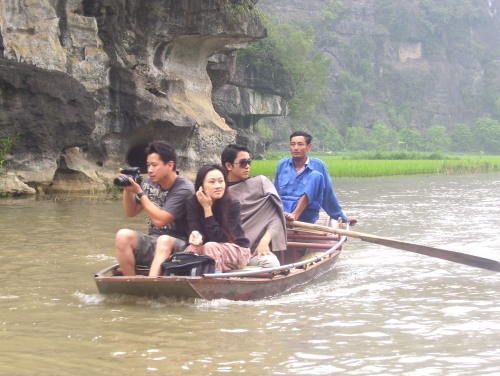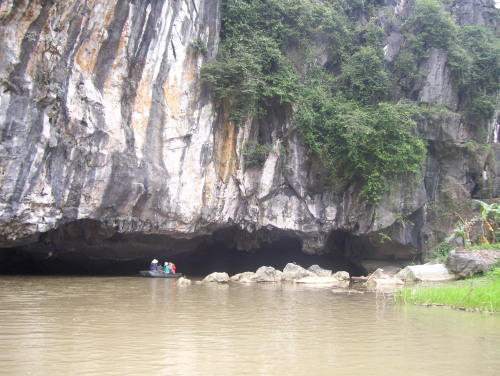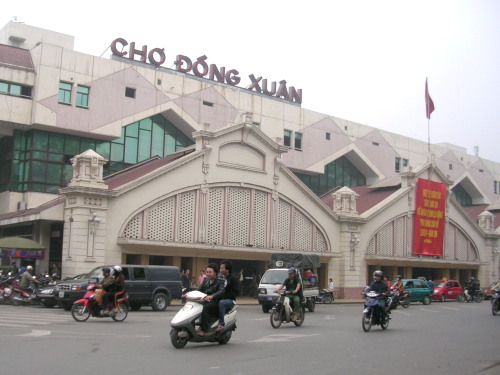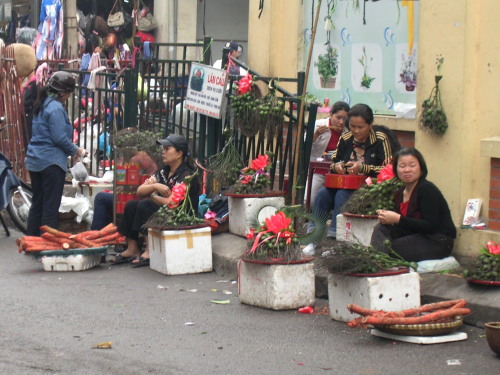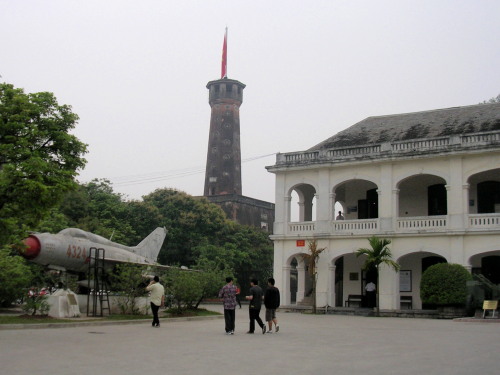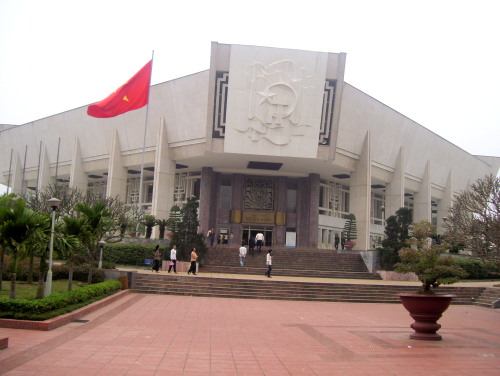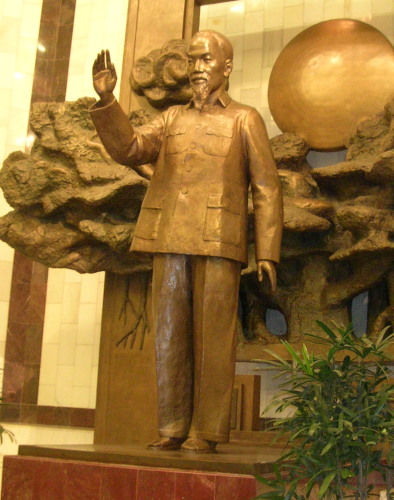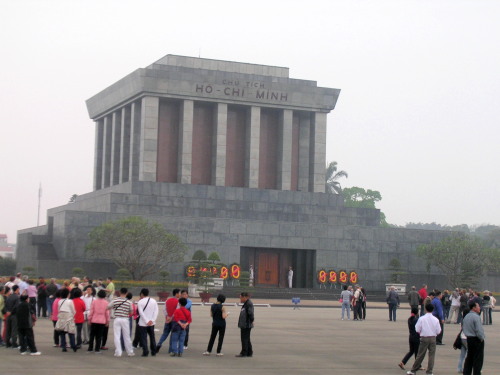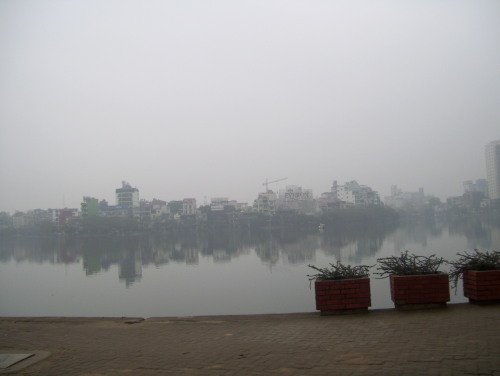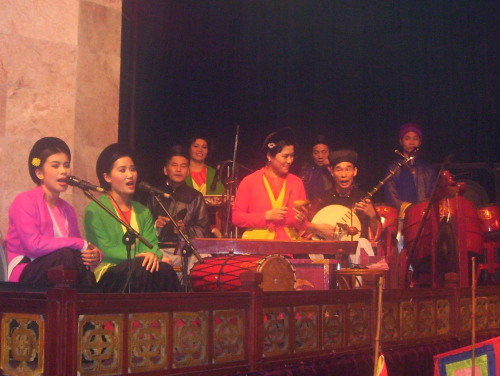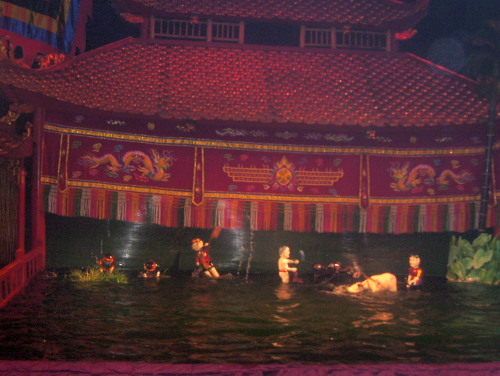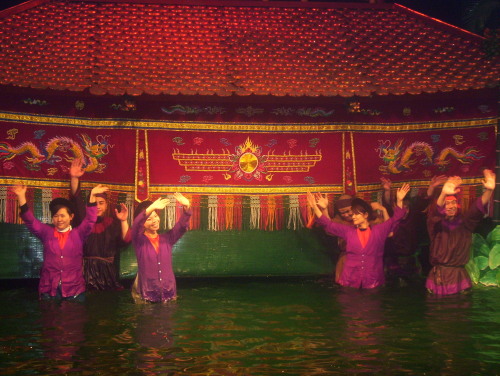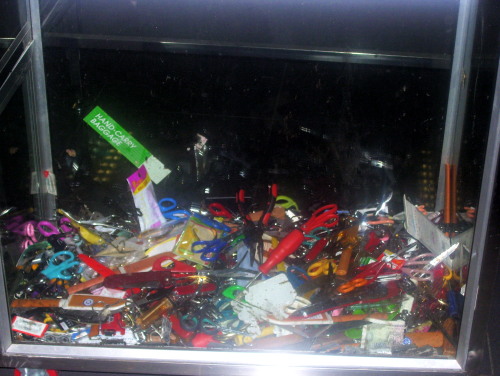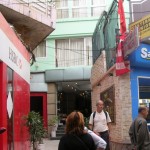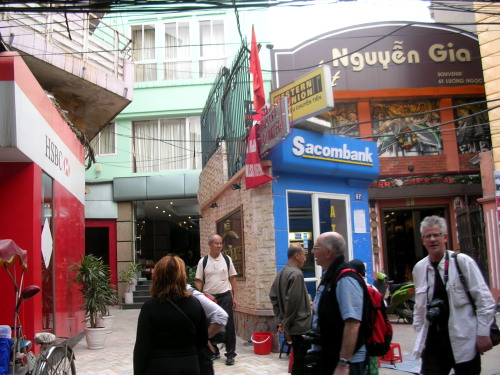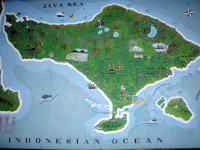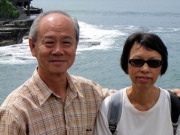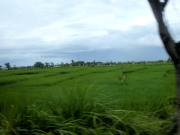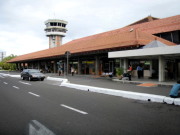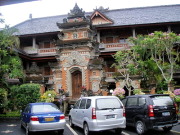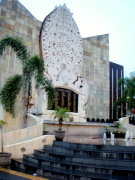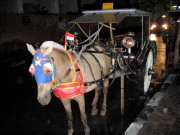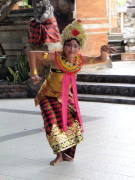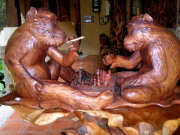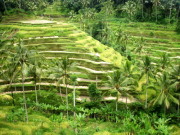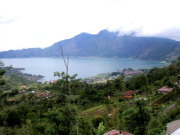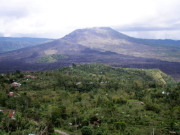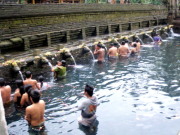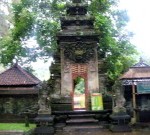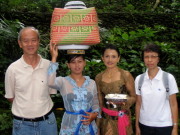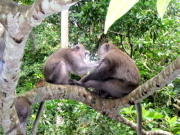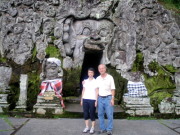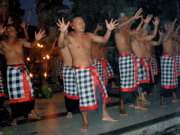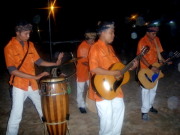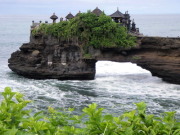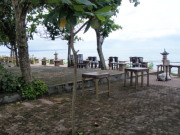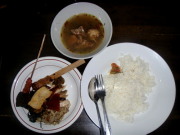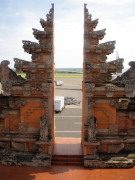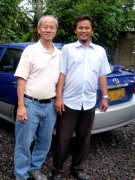Hanoi Travel I
Hanoi
Hanoi is in the north of Vietnam. Located on the west bank of a long river, Red River (1,200 km), it has over 1000 years of history.
Red River Delta
The Red River originates from the highlands in Yunan Province and flows south-east. Midway, it is joined by two tributaries, Clear River (Lo River) and Black River (Da River). Together, the rivers bring a large amount of alluvial soil annually and deposit it in the Gulf of Tonkin creating a large fertile delta, Red River Delta, which is 120 km by 140 km now. The delta is now the economic hub of North Vietnam where tourism, agriculture, industry, trade, commerce, finance and banking are growing. As a result, the delta has become a densely populated area of over 6 million people.
Hanoi as a Capital
Hanoi was first made a capital in 1010 by Ly Thai, the first ruler of the Ly Dynasty. Then in 1887, the French colonialists made it the capital of the French Indochina. Later, in 1954, the Viet Minh led by Ho Chi Minh liberated North Vietnam from the French colonialists and made it the capital of the Independent North Vietnam. Finally, on 2 July 1976, it became the capital of Vietnam when North and South Vietnams were reunited.
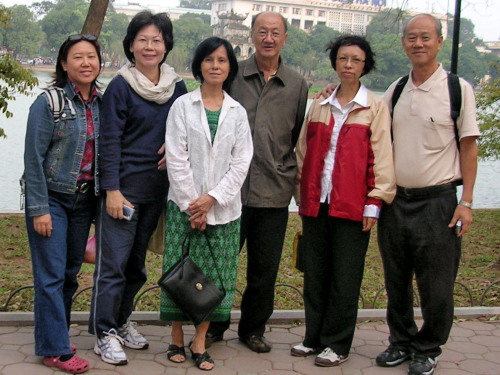
Group of Six: L to R- Grace Gan, Grace Chen, Mrs. Chua, Mr. Chua, Peng (writer’s wife) and writer at the Hoan Kiem Lake Park
Group of Six
On 15 March 2009, my wife and I, together with four friends (Mr. and Mrs. Chua, Grace Chen and Crace Gan), took an Air Asia plane at Kuala Lumpur Internatinal Airport and flew to Hanoi to see for ourselves the places of interest there.
Day 1
15 March 2009
After 3 hours and 15 minutes of flying we landed safely at Noi Bai Airport which is 35 km north of Hanoi. Then we paid USD 15 each for the transport from the airport to the hotel we had booked earlier through Air Asia. The hotel known as Hanoi Palace Hotel is a three-star hotel. It is located in the old part of Hanoi which is called the Old Quarter.
The Old Quarter
The Old Quarter is a maze of narrow streets lined with narrow quaint shophouses and trees. These old shophouses are narrow because the owners were taxed according to the width of their buildings. To overcome the narrow building space, they built them longer and the latter are commonly known as “tube houses”.
The Old Quarter had 36 streets that were named after the trades carried out there in the olden days, e.g. Hang Bac (Silver Street), Hang Be (Rattan Raft Street), Hang Bo (Basket Street), Hang Bong (Cotton Street), Hang Ca (Fish Street), etc. Most of these shophouses have given up their traditional trades and are now cafes, bars, mini-bars, cyber-cafes, mini-hotels, tour-agency offices, restaurants, etc.
The Old Quarter As A Tourist Attaraction
The Old Quarter has now become a tourist attraction. To learn about the old city of Hanoi, the Old Quarter is the best place to visit. The first thing we did on our first day in Hanoi was to visit the sights of the Old Quarter and feel the hustle and bustle of the place. The old buildings here are either two or three storeyed. Most of them are built with balconies after the style of the French buildings.
The old streets are untidy and dirty with wires strung from pole to pole and waste water flowing along the sides of the roads. Most of the buildings have not been painted for umpteen years. Quite often a procession of trishaws can be seen moving slowly along the roads. They carry tourists who want to enjoy the sights and sounds of the quaint Old Quarter.
Chaotic Traffic Situation
While walking along the streets, we were shocked to see the chaotic and constant flow of traffic. Besides being narrow, the streets allow two-way traffic flow aggravating the traffic situation. Motorbikes and cars honk frequently asking pedestrians and others to give way. I was surprised that nobody was agitated by the honking. I quess the locals understand the unavoidable chaotic traffic situation and have already got used to the noise. While walking in the Old Quarter we were always on the lookout for the vehicles making sure that we would not end up in the hospital.
Hardworking Vietnamese Women
It is a common sight to see hardworking Vietnamese women, some in conical straw hats, peddling their goods in baskets which they carry around and persuading passers-by to buy them. They sell fresh flowers, food, drinks, vegetables, fruits, meat, etc. Besides, on the roadside or walkway of every street, there are some women who set up small foodstalls selling a variety of cheap local food like chicken, pork or beef rice-noodle (pho), porridge, spicy rice-noodle, etc. During our three days stay in Hanoi we had patronized some of these stalls. It was quite an experience for us to savour their food in the streets. We had to sit on a low plastic stool (about a foot high), hold a bowl of hot food (no table was provided) and enjoyed the cheap Veitnamese food in the midst of the noisy traffic.
Hoan Kiem Lake
There is a lake, Hoan Kiem Lake, in the Old Quarter. In the middle of the lake, there is an islet with a small, lonely pagoda-like tower known as Tortoise Tower (Thap Rua). A temple, Ngoc Son Temple (Jade Mountain Temple), is located near it. It was built in the 18th. century in dedication to a scholar, Van Xuong, and General Tran Huang Dao who fought against the Mongols in the 13th. century.
According to a Vietnamese legend about the lake, a Vietnamese king, Le Loi, received a magic sword from a golden tortoise in the lake in the 15th. century. He used it to fight the Chinese invaders and won the battle. Later, he returned the sword to the creature which then disappeared in the lake. So, the Hoan Kiem Lake is also known as the Restored Sword Lake and the Tortoise Tower was erected in memory of the helpful animal.
A Place for Leisure and Recreation
The lake is a popular place for the locals. They go to the park round the lake in the morning and evening to dance, sing, stroll, relax, exercise, meet friends, etc. This lake park is a also favourite haunt for lovers in the evening. They can be seen having conversation with each other, admiring the scenic lake together or having intimacies that attract the attention of curious onlookers.
Pick pockets Pick pockets are many there. I was a victim on the last night of my stay in Hanoi.
An expensive digital camera was taken away from my chest pocket without my knowledge by a thin, tall man who wore a cap to hide his identity. When I knew that the thief had stolen my camera, he had disappeared in the crowd. I was saddened to have lost over 400 photos which I had painstakinly taken in some tourist places in North Vietnam. (The photos you see here are given to me by akind friend, Grace Gan, who toured together with me and others.)
Old Colonial French Buildings
Old colonial French buildings are still around, especially, in the east and south of the Hoan Kiem Lake., e.g. the Grand Opera House, the State Bank of Vietnam (formerly the Bank of Indochina), the Presidential Palace (formerly the palace of the governor-general of French Indochina), the Cathédrale St-Joseph, and the historic hotel Sofitel Metropole.
Day 2
16 March 2009
Journey to Halong Bay
In the morning, we planned to go to a famous place which is known as Halong Bay. It is 170 km east of Hanoi. At 9.30 a.m., a van came to our hotel to fetch us. Together with other tourists, we travelled for
3 1/2 hours on a road which was dusty, busy and sometimes bumpy. We went through agricultural land planted mostly with paddy, villages and towns to Halong Bay. We only stopped once at a large building which sold all kinds of Vietnamese arts and handicrafts.
Embroidery Arts
That building had a large room where young boys and girls were employed to produce embroidery pieces of art. They, painstakingly, sewed a piece of white cloth with coloured threads to produce a picture. A piece of picture of size 20 .5 cm x 25 .5 cm would take a child 2 weeks to complete and cost USD 25 only. We were shocked when their supervisor told us that those children were born with birth defects and disabilities. It was because their parents were unfortunately exposed to Agent Orange during
the Vietnam War in the 1970’s.
Before leaving the place, my wife bought a beautiful picture of a woman pushing a bicycle with a basketful of fresh, colourful flowers (see photo above).
Agent Orange
In 1970, during the Vietnam War, the Americans sprayed the jungles in Vietnam with a very toxic chemical, dioxin, commonly known as Agent Orange, to destroy the trees depriving the North Vietnamese armies of the jungle cover. Consequently, 3 million people were killed, the survivors suffered disabilities and their chidren were born with birth defects and disabilities.
Halong Bay
Soon we arrived at the Hon Gai wharf at 1 p.m. We were surprised to see the place crowded with hundreds of tourists waiting to board their boats to Halong Bay. There were lots of boats there. They looked like Chinese junks which were large and made of wood. Every boat had a large, wooden and painted figure of a dragon attached to its bow. To the Vietnamese, it signifies blessings and prosperity.
We could not go to the boat yet as we had to wait for an hour for a group of tourists to arrive. When they arrived, they joined us and together we boarded a boat. Soon it left the wharf and was moving slowly towards the small and large islands scattered in the Bay of Halong numbering over 1000.
Halong Bay Islands
The scenery of the islands in the Halong Bay is considered a natural wonder of the world. The locals name the islands according to their shapes, such as Banana, Tortoise, Wallowing Buffalo, Nail, Small Fish, Wading Ox, Fighting Cocks, etc. Some of these islands, especially the large ones, have caves.
After having lunch in the boat, we went to the top deck and watched boats cruising to the islands and boats returning to the wharf. It looked as though the boats were on a warpath. Soon we sighted the islands of different shapes, sizes and heights, seemingly, emerging from the sea. The panoramic view of these islands was spectacular in spite of the haze in the air that reduced the visibility slightly.
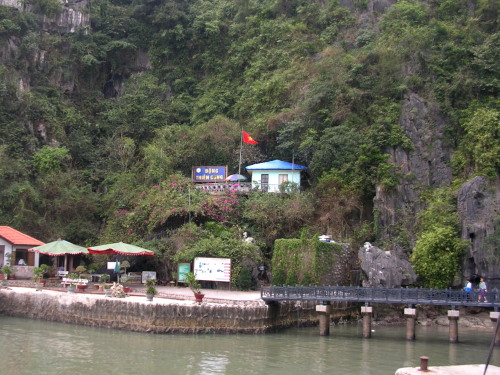
A Vietnamese Belief
According to a Vietnamese belief, a large dragon came down from heaven to the earth and with its powerful long tail carved a large rock into small hills and then flew away. So the people call the place ‘Halong Bay’ which means ‘Descending Dragon Bay’.
Thien Cung Cave
An hour later, we stopped at an island and disembarked the boat. Then we climbed steep staircases and entered a cave, Thien Cung Cave. It was large and had a high ceiling. Stalagtities, stalagmites and
pillars of different shapes and sizes were plentiful inside. Some of these formations had collapsed. With a little bit of imagination, we could see some of these rock formations that looked like dragons, lions, monkeys, fish, corals, etc. I noticed that the cave was unusually white and clean. I guessed it had been scrubbed clean not by nature but human beings. My guess was confirmed when we entered an adjacent cave which was in its original condition: dark, dirty, and covered with algae and moss.
Halong Bay Cruise
Later, we left the island. As our boat cruised among some towering islands with sheer rocks and lush rainforests we past by a floating village where the fishermen bred fish in cages and nets. When we saw two small rocks close to each other our tour-guide told us that they were
called “fighting cocks’. They were aptly named as the two rocks looked like the cocks’ heads facing each other and getting ready to fight. Then we headed back to the Hon Cai wharf and travelled back to our hotel in Hanoi by the same van that brought us to the former place.
(continued on Hanoi Travel II)
Hanoi Travel II
(continue from Hanoi Travel I)
Day 3 17 March 2009
Hoa Lo
On this day, we decided to visit two places of interest, viz. H0a Lo and Tam Coc. A van came to hour hotel in the morning and picked us up. It brought us to Hoa Lo first. It is about 110 km south of
Hanoi. After two hours of travelling we arrived at a large open field in Hoa Lo. From the field, we could see high hills and temples. Hoa Lo was once an ancient capital as the hills provided protection to the dwellers then.
Temples of King Dinh and King Le
We visited two well-known temples there. There were built as shrines to the memory of two kings, King Dingh Bo Linh and King Le Hoan, who lived in the 10th. century. The temples were built like those in China but they were lower. According to our tour-guide, Cong, one day, King Dingh and two of his three sons were assassinated by some generals who wanted to overthrow him. His wife, with the help of a loyal general, Le Hoan, defeated them and made Le Loan the new king. Later, she married him and her youngest son who escaped the assassination lived with them. The first temple we visited had a
statue of King Dingh and his wife inside and the second one nearby had three statues, King Le, his wife (formerly King Dinh’s wife) and King Dingh’s youngest son.
Tam Coc (Three Caves)
Later, we left Hoa Lo and headed for a small town called Tam Coc. Tam Coc has a long, winding, shallow and slow-moving river known as Hoang Long River. It meanders in between limestone-hills and also cuts through three low caves that give the place the name Tam Coc or Three Caves. As the scenery of the hills is similar to the one in the Halong Bay, it is also known as ‘Halong Bay on Land’.
Vietnamese Boat Rowers
When we arrived at the Tam Coc wharf, we saw Vietnamese rowers waiting for tourists to board their small boats which were made of metal. Each boat can carry six adults including a paddle-man and his assistant. Before we went for the boat ride, we had lunch first at a new restaurant at the wharf. After the meal, we boarded the boats: two, three or four persons to each boat. My wife and I sat in a boat which was rowed by a 15 year old boy and his assistant, a 22 year old sister. The small and skinny boy was rowing with two long oars while her sister was rowing with a short one.
Writer Helped to Row
Later, as I felt I needed some exercise, I took over the lady’s task and enjoyed rowing upstream. As we moved along the river we saw paddy-fields and towering hills which were scenic. We also
went through three low caves which were dark inside. On one occssion, we saw two white goats grazing high up on a steep slope of a hill. A few minutes later, we saw lots of boats of tourists on their returning journey. Some of them were smiling at me and taking snap-shots as I was helping to row the boat. Along the river, I noticed some uniformed officers with an arm-band watching the river traffic. I guessed they were traffic police.
A Mysterious Metal Box
When we had travelled midway an oncoming boat came close to our boat and a man transferred a large metal box to our boat. I was wondering what was inside the box. An hour later, we came to the end of the boat-journey and had to turn
back. While we were turning back we were obstructed by a boat carrying food and drinks. The lady of the boat persuaded us to buy some food or drink for our rowers. We bought a pack of snack for the young boy.
Lady Rower Became Businesswoman
As we were going back half-way, the lady of our boat opened the metal box, took out table-cloths with simple embroidery and persuaded my wife to buy them. As my wife felt the embroidery works were not attractive and the cloths were expensive she refused to buy them. Then the disappointed lady took out other handicrafts and showed them to my wife. She became more disappointed when my wife refused to buy them too. But when we gave her and her brother a handsome tip she felt happy and friendly again.
I guessed these poor Vietnamese rowers were trying to make some extra money from tourists even though they knew they would be given tips by generous tourists.
Later, the lady transferred the box to another boat which was going upstream and I was surprised that she boarded the other boat leaving her poor tired little brother to row. As I was helping to row most of the time, she might have thought that I would continue doing so until we reached the wharf.
Leg Rowing
On the way back, I was amazed to see our young rower sit at the back and use his legs to row the boat while I was still using my hands. I also saw other rowers rowing with their legs, skillfully and
effortlessly. On arrival at the wharf, we thanked the boy who looked so tired that he could not say a word. As we disembarked the boat, a middle-aged lady talked to us in Vietnamese which we could not understand and at the same time pointed at the boy who rowed us. Then someone told me in Mandarin that the lady said that the boy was her son. In response, I stuck out my right thumb up and then pointed at the boy who was still panting. Well, that was an enjoyable boat-ride and a spectacular sight of the Tam Coc limestone hills.
Grace Gan, A Good Entertainer
Later, we left Tam Coc for Hanoi. Our return journey was an enjoyable one as we were entertained by one of our
friends, Grace Gan, most of the time, with her jokes, singing and interesting working experience tales. On arrival at the city, we had dinner at a small restaurant which had narrow staircases all the way up to the second floor. As the ground floor and the first floor of the restaurant were full of customers, we had to go up to the second floor. Luckily, our body-size was small enough to go up the staircases, otherwise we had to look for another restaurant nearby.
Puppet Show Tickets Sold Out
After dinner, we went to a famous theatre for a wooden puppet show. But we were disappointed as the tickets for the last two shows in the evening were sold out. Anyway, we tried to book for one of the following day shows. We were shocked when we were informed by the ticket-
seller that the only show that was available for booking was the 9 p.m. show which was the last show. As we had no choice we booked the tickets for that show.
Day 4 18 March 2009
Do Xuan Market
On the morning of our 4th. day in Hanoi, we left our hotel and walked to the largest Hanoi market, Dong Xuan Market. It was built in 1889 and now its building is much larger after renovation and expansion. The front part houses lots of stalls that sell goods ranging from apparels and handicrafts to electrical and electronic goods whereas the back part is wet and dry market. Dong Xuan Market is considered as the largest wholesale market in North Vietnam.
After walking for 15 minutes, we arrived at the market and were shocked to see the chaotic and appalling situation of the place behind the market. Roadside vendors set up their stalls haphazardly making the roads narrower. Motorbikes parked on the roadside in a disorderly manner and shops laid their goods in the walkway. Besides, the place was dirty and congested with both motorbikes and cars.
We spent a lot of time at the market as some of us were busy looking for something to buy like clothes and handbags, and haggling over the prices.
Vietnam Military History Museum
In the afternoon, we hired our hotel jeep for a short trip in the city. First, it brought us to the Vietnam Military History Museum in Dien Bien Phu Road in Ba Dinh District. Opened in 1958, this museum features thousands of exhibits that depict the Vietnamese military history and the wars the Vietnamese fought against the foreign invaders who were Chinese, French and the Americans. The most interesting exhibition at the museum was about the Vietnam War (1954 – 1975) when the Vietcongs were trying to conqure South Vietnam from the American imperialists.
War-Hardwares
In the compound of the museum, some war-hardwares used by the Vietcongs and the Americans during the war are on display, such as the captured American jetfighters, helicopter, tank and
artilleries, and the Russian MiG jetfighter and tank. Besides, there is a large and high pile of crashed American fighter planes near the Flag Tower. The Flag Tower which is 31 m high and was ready in 1812 is a Vietnam national cultural monument.
Ho Chi Minh Museum
The second place we visited was the Ho Chi Minh Museum. Built in 1990, it is located in the Ba Dinh Square and half a kilometre from the Vietnam Military History Museum. This large, majestic-looking building is dedicated to a great Vietnamese hero, Ho Chi Minh. It showcases his hard life, determined struggle for his country’s independence from
the French colonialists and his successful political career.
Ho Chi Minh
According to Wikipedia, Ho Chi Minh (May 19, 1890 – September 2, 1969) was a Vietnamese Communist revolutionary and statesman who was Prime Minister (1946–1955) and President (1946–1969) of the Democratic Republic of Vietnam (North Vietnam).
Ho led the Viet Minh independence movement from 1941 onward, establishing the communist-governed Democratic Republic of Vietnam in 1945 and defeating the French Union in 1954 at Dien Bien Phu. In the late 1950s, he lost political power in North Vietnam , but remained as the important figurehead president until his death at the age of 76 in 1969. He was named by Time Magazine as one of the 100 most influential people of the 20th century. When the Viet Cong captured Saigon, the former capital of South Vietnam, it named the city after Ho Chi Minh honouring their great man.
Having learned about Uncle Ho, as he was fondly called, we left the museum and walked a short distance to the place where his embalmed body was laid.
Ho Chi Minh Mausoleum
Ho Chi Minh died in 1969 at the age of 79 years old. Before his death, he wished that his body would be cremated and his ashes buried in the ground to save agricultural land.Instead, his communist party embalmed his body and placed his body in a large building near the Ho Chi Minh Museum for public viewing. The building is known as Ho Chi Minh Mausoleum.
When we reached the mausoleum we were disappointed to be informed that it was closed to public then. Later, we watched a change of guards in front of the building. Then we left the Ba Dinh Square for the largest lake in Hanoi, West Lake (Ho Tay Lake).
West Lake (Ho Tay Lake)
West Lake is in the north of Hanoi. It was a favourite place for Vietnamese royalties in the past when there were many summer houses round the lake. Nowadays, local people go there for leisure and recreaton. On arrival at the lake, we noticed that the lake was shrouded in haze. As we were all feeling tired after visiting the two museums and a mausoleum, we did not want to get down, but we asked our driver to go round the lake once. We felt the sight of the lake was scenic. But it would have been more beautiful, if the air was clear. Soon, we returned to our hotel to rest.
Water Puppet Show
In the evening, we walked from our hotel to a well-known theatre, Thang Long Water Puppet Theatre at 57B, Dinh Tien Hoang Street, to watch a wooden puppet show. We brought along our tickets which we booked the previous night.
A Pickpocket
As the 9 p.m. show was an hour away, my wife and I decided to take a walk at the Hoan Kien Lake Park for a few minutes. The park was full of people. As we were
walking towards an empty seat by the lake a thin, young man wearing a cap approached and asked me to buy his postcards. I told him I was not interested in his cards but he kept coming closer to me until his cards touched my chest. Then he walked away, quickly.
Later, my wife who suspected that guy could be a pickpocket asked me if I had lost anything, The first thing that came to my mind was my son’s expensive digital camera. Quickly, I touched my chest-pocket and it was gone! Over 400 photos I had, painstakingly, taken the last four days in Hanoi were gone too! We tried to search for the guy in the crowded park, but it was fruitless. Then, feeling unhappy about the theft, we went back to the theatre to watch the wooden puppet show.
Watching The Puppet Show
In the theatre, I tried to watch and enjoy the puppet show without thinking of the unfortunate incident. At first the show was boring, but later it became interesting and exciting and I forgot about the lost camera, momentarily.
In the olden days, farmers created puppets from wooden blocks for performing shows to entertain themselves and the villagers after every rice harvest. But they did the shows in ponds or flooded paddy fields. Nowadays, wooden puppet shows are shown in theatres in Hanoi. Both locals and foreign tourists flock to the theatres to watch an hour show, every day.
The Puppeteers
In every show, the puppeteers stand in a pool of hip-deep water behind a curtain, and using long bamboo poles and strings or wires immersed in the water they
skilfully make the wooden puppets come alive. The show is performed with the accompaniment of a live Vietnamese orchestra and rendition of two singers.
The show features 17 unrelated scenes which are mostly about traditional village life and legends. Some of the scenes can be interesting and exciting like the ‘Dragon Dance’, ‘Rearing Ducks and Catching Frogs’, ‘Fishing’, ‘Lion Dance’, ‘Phoenix Dance’ and ‘Boat Racing’. As the puppets ‘spoke’ in Vietnamese which we could not understand we tried to understand the stories by their movements and actions.
At the end of the show, eight puppeteers in brightly-coloured traditional costumes appeared in front of the curtain
clapping and waving farewell to us. We too clapped and waved goodbye to them. We felt the show was unusual and enjoyable.
Day 5
19 March 2009
Confiscated Sharp Objects
We woke up early in the morning, took our breakfast and went straight to the Noi Bai Airport to catch the 9.15 a.m. plane home, Malaysia. As we passed throught the baggage security checkpoint, we were shocked to see lots of confiscated sharp objects in a large transparent plastic box like scissors, knives, nail-cutters, etc. At about 9.30 a.m., we finally left Hanoi and were on our way home.
Well that is our short trip to Hanoi and we hope the above information is useful to the readers who intend to to go there for a visit. Our next trip will be Phuket Island in southern Thailand in June, 2009 and I will write about it after the trip.
Acknowledgement
My wife and I would like to thank the staff of Hanoi Palace Hotel at 61B, Luong Ngoc Quyen Street, Hanoi City, Vietnam for their help and hospitality during our stay there.
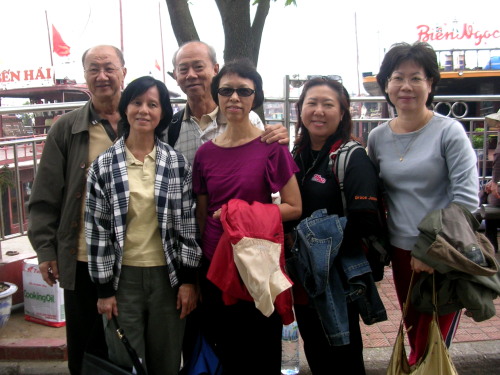
Group of Six at Hon Gai Wharf (Front row from left to right: Mrs. Chua, Writer’s wife, Grace Gan and Grace Chen; Back row from left to right: Mr. Chua and writer)
Special thanks to Lisa Duong, the General Director of the hotel for being so kind as to walk and lead us to a superstore where we could buy the famousVietnamese coffee powder cheaply.
We would also like to thank our four friends, Mr. and Mrs. Chua, Grace Chen and Grace Gan for being excellent travelling companions. Lastly but not least, I would like to thank Grace Gan for the Hanoi Trip photos. Without her photos, I do not think I would be able to write about this ‘Hanoi Travel’ .
The End
Written by:
Choo Chaw, Kluang, Johor, Malaysia.
Bali Travel
After a trip to Batam Island in September 2008, two months later we went to another Indonesian island known as Bali.
Located a short distance east of Java, Bali is 153 km long and 112 km wide and has an area of about 5,632 sq. km. It has a few active volcanoes in the east such as Mt. Agung (3,142 m), the highest, and Mt. Abang, and Mt. Batur (1,717m).
A large part of its land is covered with volcanic soil making the land suitable for agriculture. Paddy is one of its main crops and is cultivated in the low flat land as well as in terraces on the highlands.
Looking at the map of Bali, the island looks like a bird standing near its egg which represents a smaller island known as Lombok. Denpasar with a population of over 300,000 is the capital of Bali and the international airport, Ngurah Rai International Airport, is in the south of this city.
Although Indonesia is a Muslim-dominant country , over 90% of Bali’s population believe in Hinduism that is mixed with some local Balinese beliefs. It is surprising that the small island has about 20,000 Hindu temples. The temples are built in Balinese architechural style and have narrow entrances and stone
statues of Ramayana characters. The island is commonly known as “The Island of Gods”. Sometimes, it is called “The Paradise on Earth”.
Bali is famous for arts and crafts. Besides, its dances are unique and well-known all over the world. The dances are usually incorporated in dramas that depict stories of Hindu epics of Ramayana mixed with local legendary tales, such as Barong, Legong, Kechak, Pendet, Topeng, Gong Keybar and Baru.
Tourism is the mainstay of Bali. Among all the Indonesian islands, Bali is the most popular tourist destination attracting millions of tourists from all over the world
every year. Its rapid growth in tourism has led to the increase in the living standard of the Balinese. It is commendable that many Balinese take the trouble to learn and speak English.
In 2002, a horrendous bombing in a popular tourist area in Kuta, south of Denpasar, killed 202 people and injured about 200. Most of the casualties were foreigners. It was caused by the Indonesian Muslim terrorists. Then in 2005, a series of terrorist bomb-attacks at Jimbaran and Kuta in southern Bali killed 20 and injured 129. The two bombings in 2002 and 2005 have, undoubtedly,
discouraged tourists from visiting the beautiful island. As a result, they have caused
severe economic hardship to the islanders for several years. To encourage foreigners to visit Bali, the Indonesian government has been taking measures to make the islands safe for tourists. To gain their confidence, the government holds frequent international conferences in Bali.
In November 2008, my wife and I decided to visit Bali, as we thought it was safe to have a short vacation there then.
Day 1 (27 November 2008)
On 27 November 2008, we boarded an Air Asia plane at LCCT at Sepang and flew directly to Bali. In the afternoon, 3 hours and 40 minutes later, we touched down safely at Ngurah Rai International in Bali. Then we were whisked away by a hotel van to a budget hotel known as Puri Dewa Bharata Hotel which we had booked earlier through Air Asia.
Later in the evening, the same hotel van brought us to Kuta town. While travelling in the town, our driver stopped and pointed across the road at a spot and said that at that place a terrorist powerful bomb attack occurred in a bar known as Paddy’s Club killing 202 people and burning down many shops nearby. He then pointed at a large man-made structure known as “Bali Blast Monument” which was erected on 12 October 2004 on the 2nd. anniversary of the bomb attack. It is made of stone with intricate carvings and a large marble plague with names and nationalities of those killed in the bomb attack. Besides, it is flanked by the national flags of the victims.
After dinner at a KFC outlet in Kuta, we decided to walk about in the town. As we were walking along a road, Pantai Road, parallel to the Kuta beach, we saw hotels, bars, restaurants and a lot of tourists. It is a popular tourist place as there is a beautiful sandy beach with a bay. Besides, we saw horse-drawn carriages trotting along the road carrying tourists for joyride. At 11 p.m. we left the place in a taxi for our hotel.
Day 2 (28 November 2008)
On the second day in Bali, we booked a private car with an English-speaking Balinese driver, Nyoman. He was also our tour guide. At about 9.30 a.m., he came
to our hotel to pick us up and then we left to begin our Bali tour. The first place Nyoman brought us was a theatre in Batu Bulan to watch a morning live Balinese performance known as Barong and Kris Dance. It was a play about the fight between Barong, the good spirit, and Rangda, the evil spirit. It was an hour show accompanied on the music by a “gamelan” orchestra and it attracted quite a lot of tourists.
The show began with the Barong dance or “Lion” dance which was boring to watch. It was performed by a strange looking creature which had a tiny head but a huge furry body. Subsequently, the show became interesting. There were two pretty girls in colourful Balinese costumes who amazed us. As they were dancing they moved their hands, legs, heads and body slowly but gracefully. But when they opened their eyes wide and looked
left and right their exposed white large eyeballs frightened the audience.
After the show, we left for Ubud which is a well-known area for factories that produce arts and crafts. We visited three of them at different places. The first one we visited produced batik, then the second one gold and silver jewellery, and the last one carved wooden animals like horses, lions, monkeys and crocodiles, human beings, landscapes, masks, etc. Some of these creatures were life-seized.
As we were passing through Ubud to a highland, Tegallang, we saw hundreds of small shops selling nothing but all kinds of local arts and crafts.
On arrival at Tegallang, we stopped and joined a group of tourists at a vantage-point to see the beautiful scenery of the paddy terraces on steep hill-slopes. At that moment the terraces were dry and the paddy had already been harvested.
Then we moved on to another place, a village known as Kintamani, which is at a height of over 1,750 m. When we arrived there we entered a crowded restaurant, Batur Sari Restaurant, which perched at the edge of a cliff. While having lunch at the back of the restaurant, we feasted our eyes on the breathtaking scenery of the distant landscapes of a volcano, Mount Batur (1,717 m), a deep valley, a higher and larger volcano, Mount Abang, and a large lake, Lake Batur (a crater), with dwellings along its edge.
After enjoying the beautiful sight, we had to pay the restaurant a high price for our meal which cost 121,000 Rp. per person(including the exorbitant 21% tax!).
Our next stop was a coffee farm. While travelling through some villages in the hilly areas, our driver, smilingly, asked us to look out for ladies bathing topless in streams along the road. At first we did not believe him. A few minutes later, we were shocked to see one in a stream.
Soon we arrived at a coffee farm and were treated to a variety of tea and coffee drinks. Looking around, we did not see any coffee or tea plants but a man roasting coffee beans in a little hut. When asked, our driver explained that the area was once a coffee farm but as the area was small, it was planted in a larger area at another place.
Then we continued our journey and soon we arrived at Tampaksiring where we visited an old, large Balinese temple, Tirta Empul Temple. It has a pool where underground water can be seen coming out of its bottom. This so-called “holy water” flows into another pool nearby where Hindu devotees bathe with it to
cleanse themselves of their sins.
The next place we went was a monkey forest, Sacred Monkey Forest Sanctuary, at Pedangtegal. There are hundreds of long-tailed Macagues roaming freely in this forest. Besides, the forest has three temples built in the 14th. Century. We were warned that there were some mischievous monkeys in the forest. They liked to steal or snatch tourists’ possessions like sunglasses, handbags, plastic bags of food, cameras, etc. But when we were there in the late afternoon most of them were
resting in the trees. I guessed they had seen enough of tourists for the day. We met some Balinese women in their traditional clothes in the forest. They were celebrating a festival and had worhipped at the temples. Tourists who want to visit this forest should bring along an insect repellent as there are lots of blood-sucking mosquitoes there.
Our driver then brought us to Bedula to visit a small cave which I think is man-made. It is known as Elephant Cave (Goa Gajah). It is so-called because its front has been carved into an image of an elephant and a small, short tunnel has been
dug to make it into a cave. In the evening, some local people will spend their time meditating in the “cave”. Near the “cave” are some temples destroyed by earthquakes long time ago.
In the evening , our kind driver brought us to Batu Bulan again to see another Balinese performance known as Kecak and Fire Dance. It is about a prince, his beautiful wife and brother who lived in exile in a forest. A lecherous king who liked the prince’s wife asked his prime minister to bring her to his kingdom. The
prime minister then tricked, kidnapped and brought the lady to his king. When the prince discovered the kidnap, he, with the help of a large troop of monkeys, went to fight the king. He, successfully, killed the king and saved his wife.
After the show, we could not believed ourselves that we had visited so many places of interest in one day. As we were feeling tired, the first thing that came to our minds was to go for a Balinese massage. After the massage, we felt rejuvenated but famished. When we asked for a seafood restaurant, our driver brought us to one which is known as Ganesha Restaurant at Kedonganan Beach in Kuta.
We enjoyed the delicious dinner there. It consisted of a boiled crab of 1.4 kg, a sweet and sour grouper, some chilli clams, vegetable and white rice.
While we were having our meal we heard a band of four male Balinese playing musical instruments and singing English oldies to a group of tourists who were also having their meal.
When we have finished our dinner we were shocked that it was already 11 p.m. On the way to our hotel, we apologised to our patient driver for making him wait so long at the restaurant. We told him to come again and fetch us at our hotel for the following morning trip, as he was a good driver-cum-tour guide.
Day 3 (29 November 2009)
Our 3rd. day in Bali was our last day. As we had to leave Bali by plane at 4.50 p.m.we decided to make a short trip to Tanah Lot in the morning to see a famous temple sitting on a hard rock at the Indian Ocean. Our driver, Nyoman, came and brought us to the place in the morning. On arrival, we were awe-stricken to see beautiful coastal landscapes. The coastal land is high which is about 70 m above sea-level and has steep cliffs, promontories, stacks, arches and caves. All these structures have been created by the strong ocean waves.
Perched precariously on an arch is a small temple which is out of bound to the tourists. Not far from this temple is a another one which is built on a solid rock.
The rock becomes an islet when there is a high tide and it is about 100 m from the mainland. The view of the temple on the rock is spectacular.
On the mainland there is a spot near the edge of the cliff and is 70 m above the sea. It commands a panoramic view of the vast expense of the Indian Ocean. On a clear day, the eastern part of Java Island can be seen from this spot. In the evening, tourists go there to watch the sunset. Hence, the place is known as Sunset Terrace.
Having seen enough of the sacred place, we went to the capital of Bali, Denpasar. When we arrived there we stopped at a small restaurant for lunch. As we entered the restaurant we saw on the walls photos of customers and their words of praise for the food served there. We thought we would enjoy the meal there if what the customers said was true. For 50,000 Rp. for a meal per person, we were given a plate of white rice, a bowl of
pork meat soup, and a plate containing a stick of grilled pork meat, a few pieces of roasted pork (“babi guling”) and some vegetable. After taking the food, we felt that it was “so-so” for us.
Then we went to a superstore which is well-stocked with Balinese-made goods, such as clothes, hadbags, belts, souvenirs, arts, handicrafts, preserved foods, etc. It is called Krishna. After buying a few items there we left for the airport. On arrival, we thanked our good driver, Nyoman, tipped him for his excellent service and bade him farewell. Finally, at about 5 p.m. we left Bali and flew back to Malaysia, our homeland.
Well, that was a short but enjoyable vacation in Bali and we hope to visit more foreign places in the near future.
Here, I would like to thank I Nyoman Sudira, our excellent, patient and obliging driver-cum- tour guide, for making our Bali tour an enjoyable and memorable one. Those who are interested in his service can contact him by handphone: 0361-7432274 or at his email address, Lembut_Bali@yahoo.com .
Our next vacation will be in Hanoi City and hope you will read about it when I have visited the place and written about it. Well, I hope you have gained something from what I have written about our Bali trip.
Written by:
Choo Chaw, Kluang, Johor, Malaysia.

